Enjoying the content on 3QD? Help keep us going by donating now.
Category: Recommended Reading
Bill Knott: The Crown Prince of Bad Judgment
Sandra Simonds at Poetry Magazine:
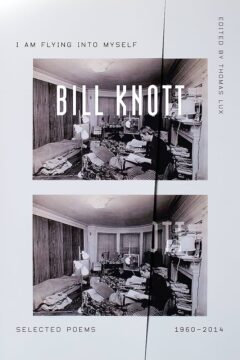 While Knott may have alienated his peers in what Charles Bernstein dubbed “official verse culture,” by the 1970s and ’80s his irreverent style, trickster persona, and anti-establishment ethos were precisely why he found fans in the emerging punk rock scene. In their novel Inferno (2016), Eileen Myles calls Knott a “genius” who lived in a “hovel” and looked “generally greasy.” They also remark, “people claim that Bill Knott was the inspiration for punk.” Perhaps Knott’s connection to punk rock explains why the foreword of the reissued Naomi Poems is written by Richard Hell, a pioneer in the punk movement known for his bands Television and Richard Hell and the Voidoids. Upon encountering the collection at age 18 or 19, within a year of its release, Hell says the book felt “like an infection or injection.” He was captivated by its “all-pervading condition of longing, adoration, fear, and fury, lurching from near-worship of ‘Naomi’ into anger and despair at, among much else, the bloodthirsty American military and their corporate cohort.”
While Knott may have alienated his peers in what Charles Bernstein dubbed “official verse culture,” by the 1970s and ’80s his irreverent style, trickster persona, and anti-establishment ethos were precisely why he found fans in the emerging punk rock scene. In their novel Inferno (2016), Eileen Myles calls Knott a “genius” who lived in a “hovel” and looked “generally greasy.” They also remark, “people claim that Bill Knott was the inspiration for punk.” Perhaps Knott’s connection to punk rock explains why the foreword of the reissued Naomi Poems is written by Richard Hell, a pioneer in the punk movement known for his bands Television and Richard Hell and the Voidoids. Upon encountering the collection at age 18 or 19, within a year of its release, Hell says the book felt “like an infection or injection.” He was captivated by its “all-pervading condition of longing, adoration, fear, and fury, lurching from near-worship of ‘Naomi’ into anger and despair at, among much else, the bloodthirsty American military and their corporate cohort.”
Star Black, Knott’s former partner, mentioned to me in a phone conversation that Thurston Moore of the band Sonic Youth exchanged poems and music with Knott. When I reached out to Moore via email, he recalled that he asked Knott to open for Sonic Youth in the early 2000s but the poet “demurred.”
more here.
Enjoying the content on 3QD? Help keep us going by donating now.
Bill Knott: “Ant Dodger”
Enjoying the content on 3QD? Help keep us going by donating now.
This Scientist Wants to Block the Sun to Cool the Earth
David Gelles in The New York Times:
 David Keith was a graduate student in 1991 when a volcano erupted in the Philippines, sending a cloud of ash toward the edge of space. Seventeen million tons of sulfur dioxide released from Mount Pinatubo spread across the stratosphere, reflecting some of the sun’s energy away from Earth. The result was a drop in average temperatures in the Northern Hemisphere by roughly one degree Fahrenheit in the year that followed. Today, Dr. Keith cites that event as validation of an idea that has become his life’s work: He believes that by intentionally releasing sulfur dioxide into the stratosphere, it would be possible to lower temperatures worldwide, blunting global warming.
David Keith was a graduate student in 1991 when a volcano erupted in the Philippines, sending a cloud of ash toward the edge of space. Seventeen million tons of sulfur dioxide released from Mount Pinatubo spread across the stratosphere, reflecting some of the sun’s energy away from Earth. The result was a drop in average temperatures in the Northern Hemisphere by roughly one degree Fahrenheit in the year that followed. Today, Dr. Keith cites that event as validation of an idea that has become his life’s work: He believes that by intentionally releasing sulfur dioxide into the stratosphere, it would be possible to lower temperatures worldwide, blunting global warming.
Such radical interventions are increasingly being taken seriously as the effects of climate change grow more intense. Global temperatures have hit record highs for 13 months in a row, unleashing violent weather, deadly heat waves and raising sea levels. Scientists expect the heat to keep climbing for decades. The main driver of the warming, the burning of fossil fuels, continues more or less unabated. Against this backdrop, there is growing interest in efforts to intentionally alter the Earth’s climate, a field known as geoengineering. Already, major corporations are operating enormous facilities to vacuum up the carbon dioxide that’s heating up the atmosphere and bury it underground. Some scientists are performing experiments designed to brighten clouds, another way to bounce some solar radiation back to space. Others are working on efforts to make oceans and plants absorb more carbon dioxide.
But of all these ideas, it is stratospheric solar geoengineering that elicits the greatest hope and the greatest fear.
More here.
Enjoying the content on 3QD? Help keep us going by donating now.
Los Angeles: Oil Town
Jonathan Blake at Noema:
 Baldwin Hills juts up 500 feet from the flat expanse of the Los Angeles Basin, the result of millennia of seismic activity along the Newport-Inglewood Fault, a dextral strike-slip fault that runs for 47 miles from Culver City through Signal Hill to Newport Beach. The fault, formed some 30 million years ago when the Pacific plate collided with the North American plate (an intersection that now sits at the San Andreas Fault), expresses on the surface as a series of low, irregular hills. Below the surface, seismic activity created a series of oil and gas reservoirs, including the Inglewood Oil Field.
Baldwin Hills juts up 500 feet from the flat expanse of the Los Angeles Basin, the result of millennia of seismic activity along the Newport-Inglewood Fault, a dextral strike-slip fault that runs for 47 miles from Culver City through Signal Hill to Newport Beach. The fault, formed some 30 million years ago when the Pacific plate collided with the North American plate (an intersection that now sits at the San Andreas Fault), expresses on the surface as a series of low, irregular hills. Below the surface, seismic activity created a series of oil and gas reservoirs, including the Inglewood Oil Field.
LA’s geologic past is more than a niche interest for rockhounds and petroleum engineers. Deep time processes shaped the city’s contemporary urban geography, and still do. Rather than grow along transportation lines — the typical pattern of residential sprawl during the 19th and 20th centuries — LA’s new developments often followed oil strikes. Subterranean discoveries helped to produce the city’s famous suburbanized sprawl — a network of “black gold suburbs” that oozed away from the city’s urban core.
more here.
Enjoying the content on 3QD? Help keep us going by donating now.
James Baldwin at 100: Letter from a Region in My Mind
James Baldwin in The New Yorker:
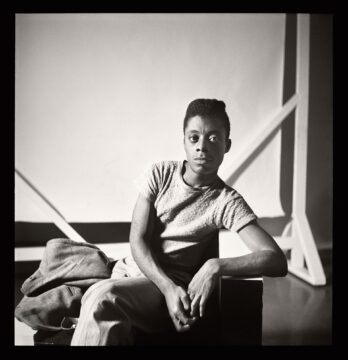 I underwent, during the summer that I became fourteen, a prolonged religious crisis. I use “religious” in the common, and arbitrary, sense, meaning that I then discovered God, His saints and angels, and His blazing Hell. And since I had been born in a Christian nation, I accepted this Deity as the only one. I supposed Him to exist only within the walls of a church—in fact, of our church—and I also supposed that God and safety were synonymous. The word “safety” brings us to the real meaning of the word “religious” as we use it. Therefore, to state it in another, more accurate way, I became, during my fourteenth year, for the first time in my life, afraid—afraid of the evil within me and afraid of the evil without. What I saw around me that summer in Harlem was what I had always seen; nothing had changed. But now, without any warning, the whores and pimps and racketeers on the Avenue had become a personal menace. It had not before occurred to me that I could become one of them, but now I realized that we had been produced by the same circumstances. Many of my comrades were clearly headed for the Avenue, and my father said that I was headed that way, too. My friends began to drink and smoke, and embarked—at first avid, then groaning—on their sexual careers. Girls, only slightly older than I was, who sang in the choir or taught Sunday school, the children of holy parents, underwent, before my eyes, their incredible metamorphosis, of which the most bewildering aspect was not their budding breasts or their rounding behinds but something deeper and more subtle, in their eyes, their heat, their odor, and the inflection of their voices.
I underwent, during the summer that I became fourteen, a prolonged religious crisis. I use “religious” in the common, and arbitrary, sense, meaning that I then discovered God, His saints and angels, and His blazing Hell. And since I had been born in a Christian nation, I accepted this Deity as the only one. I supposed Him to exist only within the walls of a church—in fact, of our church—and I also supposed that God and safety were synonymous. The word “safety” brings us to the real meaning of the word “religious” as we use it. Therefore, to state it in another, more accurate way, I became, during my fourteenth year, for the first time in my life, afraid—afraid of the evil within me and afraid of the evil without. What I saw around me that summer in Harlem was what I had always seen; nothing had changed. But now, without any warning, the whores and pimps and racketeers on the Avenue had become a personal menace. It had not before occurred to me that I could become one of them, but now I realized that we had been produced by the same circumstances. Many of my comrades were clearly headed for the Avenue, and my father said that I was headed that way, too. My friends began to drink and smoke, and embarked—at first avid, then groaning—on their sexual careers. Girls, only slightly older than I was, who sang in the choir or taught Sunday school, the children of holy parents, underwent, before my eyes, their incredible metamorphosis, of which the most bewildering aspect was not their budding breasts or their rounding behinds but something deeper and more subtle, in their eyes, their heat, their odor, and the inflection of their voices.
More here.
Enjoying the content on 3QD? Help keep us going by donating now.
Thursday Poem
Starfish
This is what life does. It lets you walk up to
the store to buy breakfast and the paper, on a
stiff knee. It lets you choose the way you have
your eggs, your coffee. Then it sits a fisherman
down beside you at the counter who says, Last night,
the channel was full of starfish. And you wonder,
is this a message, finally, or just another day?
Life lets you take the dog for a walk down to the
pond, where whole generations of biological
processes are boiling beneath the mud. Reeds
speak to you of the natural world: they whisper,
they sing. And herons pass by. Are you old
enough to appreciate the moment? Too old?
There is movement beneath the water, but it
may be nothing. There may be nothing going on.
And then life suggests that you remember the
years you ran around, the years you developed
a shocking lifestyle, advocated careless abandon,
owned a chilly heart. Upon reflection, you are
genuinely surprised to find how quiet you have
become. And then life lets you go home to think
about all this. Which you do, for quite a long time.
Later, you wake up beside your old love, the one
who never had any conditions, the one who waited
you out. This is life’s way of letting you know that
you are lucky. (It won’t give you smart or brave,
so you’ll have to settle for lucky.) Because you
were born at a good time. Because you were able
to listen when people spoke to you. Because you
stopped when you should have and started again.
So life lets you have a sandwich, and pie for your
late night dessert. (Pie for the dog, as well.) And
then life sends you back to bed, to dreamland,
while outside, the starfish drift through the channel,
with smiles on their starry faces as they head
out to deep water, to the far and boundless sea.
by Eleanor Lerman
thanks to N.P.
Wednesday, July 31, 2024
How Judy Blume’s “Deenie” Helped Destigmatize Masturbation
Rachelle Bergstein at Literary Hub:
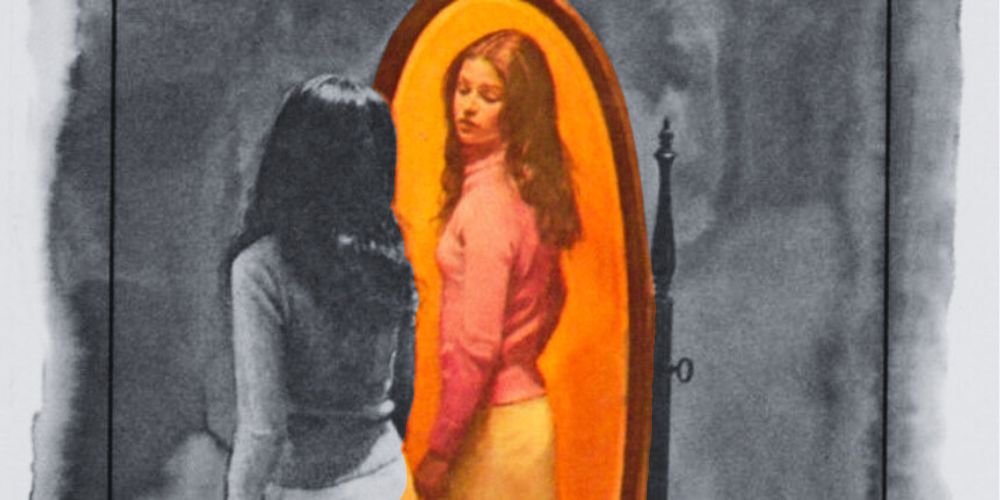 Like many adolescents, Deenie has a secret.
Like many adolescents, Deenie has a secret.
Or maybe “secret” isn’t the right word. Deenie has a private ritual, something she does when she can’t sleep. She doesn’t know why, but it makes her feel better. Touching her “special place” helps stave off her worries. Or, as she puts it, “I have this special place and when I rub it I get a very nice feeling.”
Let’s be clear—until Judy Blume’s 1973 novel Deenie, girls didn’t masturbate in children’s literature. Inventive, now classic characters like Pippi Longstocking and Ramona Quimby were zany and unpredictable, but they certainly never told us where their hands wandered when they were alone. Even now, the mention of self-pleasure in a young adult book is enough to get it yanked from school libraries.
More here.
Enjoying the content on 3QD? Help keep us going by donating now.
The Era of Predictive AI Is Almost Over
Dean W. Ball in The New Atlantis:
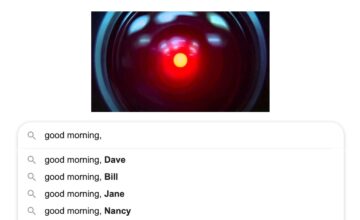 This notion — that LLMs are “just” next-word predictors based on statistical models of text — is so common now as to be almost a trope. It is used, both correctly and incorrectly, to explain the flaws, biases, and other limitations of LLMs. Most importantly, it is used by AI skeptics like [Gary] Marcus to argue that there will soon be diminishing returns from further LLM development: We will get better and better statistical approximations of existing human knowledge, but we are not likely to see another qualitative leap toward “general intelligence.”
This notion — that LLMs are “just” next-word predictors based on statistical models of text — is so common now as to be almost a trope. It is used, both correctly and incorrectly, to explain the flaws, biases, and other limitations of LLMs. Most importantly, it is used by AI skeptics like [Gary] Marcus to argue that there will soon be diminishing returns from further LLM development: We will get better and better statistical approximations of existing human knowledge, but we are not likely to see another qualitative leap toward “general intelligence.”
There are two problems with this deflationary view of LLMs. The first is that next-word prediction, at sufficient scale, can lead models to capabilities that no human designed or even necessarily intended — what some call “emergent” capabilities. The second problem is that increasingly — and, ironically, starting with ChatGPT — language models employ techniques that combust the notion of pure next-word prediction of Internet text.
More here.
Enjoying the content on 3QD? Help keep us going by donating now.
Reenvisioning Peacebuilding and Conflict Resolution in Islam
Arvind Dilawar in the Los Angeles Review of Books:
 Qamar-ul Huda opens the first chapter of his new book Reenvisioning Peacebuilding and Conflict Resolution in Islam with the differing American and Norwegian approaches to Afghanistan, illustrating how international efforts to end wars and support peace in Muslim countries can be successful, especially when conducted on Islamic terms.
Qamar-ul Huda opens the first chapter of his new book Reenvisioning Peacebuilding and Conflict Resolution in Islam with the differing American and Norwegian approaches to Afghanistan, illustrating how international efforts to end wars and support peace in Muslim countries can be successful, especially when conducted on Islamic terms.
To orient readers with the realities of peacebuilding and conflict resolution, Huda, a professor of international affairs at the United States Naval Academy, first identifies the religious character of international organizations. As he writes, “one of the key problems with the field of religious peacebuilding, a subset in conflict resolution, is that it is dominated by Catholic, Mennonite, Lutheran, Presbyterian, Methodist, and other Christian scholars,” whose approaches have been “streamlined, systematized, and normalized […] while occasionally including Hindu, Islamic, Buddhist, Sikh, and other traditions to appear inclusive.”
More here.
Enjoying the content on 3QD? Help keep us going by donating now.
2001: Creating Kubrick’s Space Odyssey
Enjoying the content on 3QD? Help keep us going by donating now.
On Charli XCX’s Soundtrack To The Season
Bradford Nordeen at Artforum:
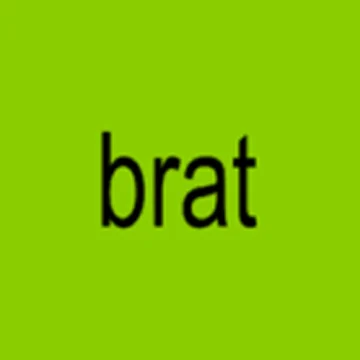 As a musician, Charli XCX was born online. Her first album circulated via CD-Rs and MySpace when the artist was just fourteen. Journalists love to drop this detail, but seldom do they follow up on how this ever-shifting www. vernacular inflects her songwriting style. Her compositions often hinge on the repetition of single words or phrases, like “focus,” “airport,” or “number one.” Syncopation spins the familiar into an earworm, disarticulating the very meaning of a lyric into a melodic vibe. After a couple of major-label albums failed to connect, Charli saw promise in how this approach might marry with the emergent underground PC Music movement. Spearheaded by the late SOPHIE and A. G. Cook, these sound sculptors used vocal modulation to transform any bedroom singer into a K-pop star—displaced within a synthetic landscape that was critically unreal, pixelated and vast. The Vroom Vroom EP (2016) was Charli’s first stab at this sound and the recipient of great vitriol from her label and critics alike. Eight years on, that sound has become the genre of music called Hyperpop.
As a musician, Charli XCX was born online. Her first album circulated via CD-Rs and MySpace when the artist was just fourteen. Journalists love to drop this detail, but seldom do they follow up on how this ever-shifting www. vernacular inflects her songwriting style. Her compositions often hinge on the repetition of single words or phrases, like “focus,” “airport,” or “number one.” Syncopation spins the familiar into an earworm, disarticulating the very meaning of a lyric into a melodic vibe. After a couple of major-label albums failed to connect, Charli saw promise in how this approach might marry with the emergent underground PC Music movement. Spearheaded by the late SOPHIE and A. G. Cook, these sound sculptors used vocal modulation to transform any bedroom singer into a K-pop star—displaced within a synthetic landscape that was critically unreal, pixelated and vast. The Vroom Vroom EP (2016) was Charli’s first stab at this sound and the recipient of great vitriol from her label and critics alike. Eight years on, that sound has become the genre of music called Hyperpop.
more here.
Enjoying the content on 3QD? Help keep us going by donating now.
Charli xcx – Von dutch
Enjoying the content on 3QD? Help keep us going by donating now.
Researchers introduce knitted furniture
Byron Spikes in Tech Explore:
 Yuichi Hirose has a dream—a dream that someday everyone will have access to a machine capable of knitting furniture.
Yuichi Hirose has a dream—a dream that someday everyone will have access to a machine capable of knitting furniture.
This machine wouldn’t just knit the furniture’s exterior fabric, but would use knitting to fashion solid three-dimensional chairs, tables and other objects. Tired of that love seat? Just unravel it and reuse the yarn to knit yourself an ottoman. This new fabrication technique—first envisioned by Hirose, a robotics Ph.D. student in Carnegie Mellon University’s School of Computer Science—is called solid knitting. The idea captured his imagination more than a decade ago. And now, working with a research team headed by James McCann, an associate professor in the Robotics Institute, he’s made it a reality.
“My dream is to have these solid knitting machines everywhere in the world,” Hirose said.
While he was still building the machine, Hirose saw a report on the internet about a software project by McCann that made it easier to reprogram commercial knitting machines. This method provided a practical way to use the machines to make customized 3D knitted pieces. These were hollow shapes, such as bunny rabbits that could be stuffed, not solid knitted pieces, but Hirose and McCann began talking about a possible collaboration.
Enjoying the content on 3QD? Help keep us going by donating now.
Downtowns Don’t Matter Anymore
Joel Kotkin at The New Atlantis:
 Simply put, downtowns matter less and less. In Austin and elsewhere, we are witnessing an epochal shift away from the highly concentrated urban center first described by Jean Gottmann in 1983 as the “transactional city.” Gottman spoke of a future dominated by massive high-rise office buildings filled with professionals who commuted largely from the periphery. Yet in reality, jobs have been dispersing throughout metro areas since the 1950s. Bumsoo Lee and Peter Gordon showed that downtowns for cities with the largest populations had dropped to 7 percent of metropolitan employment by 2000, while 78 percent of jobs were located in dispersed areas. Office occupancy and construction of new space have both seen a net decline since the turn of the century. The same goes for businesses, as investment in corporate real estate moves away from dense urban areas.
Simply put, downtowns matter less and less. In Austin and elsewhere, we are witnessing an epochal shift away from the highly concentrated urban center first described by Jean Gottmann in 1983 as the “transactional city.” Gottman spoke of a future dominated by massive high-rise office buildings filled with professionals who commuted largely from the periphery. Yet in reality, jobs have been dispersing throughout metro areas since the 1950s. Bumsoo Lee and Peter Gordon showed that downtowns for cities with the largest populations had dropped to 7 percent of metropolitan employment by 2000, while 78 percent of jobs were located in dispersed areas. Office occupancy and construction of new space have both seen a net decline since the turn of the century. The same goes for businesses, as investment in corporate real estate moves away from dense urban areas.
Remote work, rising before the pandemic but greatly expanded since, allows professionals to work ever further away from their place of employment. According to a 2023 paper at Stanford, work-from-home constituted about 7 percent of workdays before the pandemic and over 60 percent at its peak.
more here.
Enjoying the content on 3QD? Help keep us going by donating now.
Wednesday Poem
Lab Notebook
A future version of myself looks back
wanting to know when
I was married to the knife.
The thin edge whose purpose
to divide pith & pulp.
And was the question always the same:
what makes the moon like a bell
a light or a sound so clear
the sky forms around it?
Some days everyone seems
to be moving past me
the afternoons that widen like a yawn.
I have to remind myself
that it would not be so bad
if all we learned from this
was how to sing a certain song
one that hopes and hopes and hopes:
look how close
like two crows watching from a tree
to wonder & to wander.
by Erik Brockbank
from Bodega Magazine
Tuesday, July 30, 2024
What Has Travel Ever Done for Me?
Phil Christman in The Hedgehog Review:
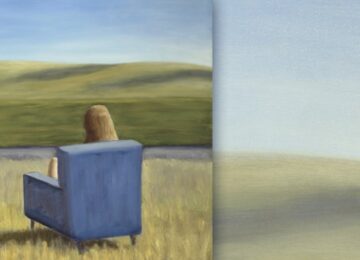 Every so often someone writes an essay with a title like “Against Travel,” “The Case for Staying on One’s Couch,” or “Germans in Sweatpants: Why Going Places Was a Mistake.” Such pieces usually go viral, since they appeal to the two itches few readers seem able to resist scratching—the itch to be agreed with and the itch to be mad at a stranger. I always root for the writers of these pieces. I want them to win the impossible fight they’ve picked.
Every so often someone writes an essay with a title like “Against Travel,” “The Case for Staying on One’s Couch,” or “Germans in Sweatpants: Why Going Places Was a Mistake.” Such pieces usually go viral, since they appeal to the two itches few readers seem able to resist scratching—the itch to be agreed with and the itch to be mad at a stranger. I always root for the writers of these pieces. I want them to win the impossible fight they’ve picked.
Why should I feel this way about travel? What has it ever done to me? Travel is one of those things one generally doesn’t attack in polite company, the world of letters excepted. Its wholesomeness is assumed. It broadens the mind. It makes us empathetic and, by rewarding our curiosity, encourages it to develop further. It teaches people the just-right amount of relativism —the amount that makes them easygoing in company, perhaps usefully pliable in exigencies, but not nihilistic. Only a fool or a misanthrope would criticize travel.
More here.
Enjoying the content on 3QD? Help keep us going by donating now.
Why Can’t we Admit Age is a (Biologically) Meaningful Number?
Raiany Romanni in Bioethics Today:
 If there’s one phrase the June 2024 U.S. presidential debate may entirely eliminate from the English vocabulary it’s that age is a meaningless number. Often attributed to boxer Muhammad Ali, who grudgingly retired at age 39, this centuries-old idea has had far-reaching consequences in global politics, as life expectancy more than doubled since the start of the 20th century, and presidents’ ages shifted upwards. We say “age is what we make of it” to ourselves and to policymakers, and think it’s a harmless way to dignify the aged. But how true is it? And if it isn’t true, why would we lie?
If there’s one phrase the June 2024 U.S. presidential debate may entirely eliminate from the English vocabulary it’s that age is a meaningless number. Often attributed to boxer Muhammad Ali, who grudgingly retired at age 39, this centuries-old idea has had far-reaching consequences in global politics, as life expectancy more than doubled since the start of the 20th century, and presidents’ ages shifted upwards. We say “age is what we make of it” to ourselves and to policymakers, and think it’s a harmless way to dignify the aged. But how true is it? And if it isn’t true, why would we lie?
For centuries, we have confused our narrative of what aging should be with what its ruthless biology is. Yet pretending that biological age does not matter is at best myopic, and at worst, it’s a dangerous story to our governments, families, and economies. In just 11 years — between 2018 and 2029 — U.S. spending on Social Security and Medicare will more than double, from $1.3 trillion to $2.7 trillion per year. As we age, our odds of getting sick and dying by basically anything go up exponentially.
More here.
Enjoying the content on 3QD? Help keep us going by donating now.
Can AI Read Your Mind?
Enjoying the content on 3QD? Help keep us going by donating now.
This is a misogyny emergency
Carole Cadwalladr in The Guardian:
 In 2016, a historically unprecedented incident took place. And yet, barely anyone even noticed. Even years later, we’ve failed to acknowledge it or to have begun the process of understanding it. Because we still can’t even see it.
In 2016, a historically unprecedented incident took place. And yet, barely anyone even noticed. Even years later, we’ve failed to acknowledge it or to have begun the process of understanding it. Because we still can’t even see it.
And that’s because this incident involved a woman. And she was asking for it.
The woman was Hillary Clinton. What she was asking for was votes. And what she got was the single biggest outpouring of misogyny in human history.
We can now say that. Although no one ever does. But this was an unprecedented previously unimaginable event. Because 2016 was when the world’s first global instant mass communication technology – social media – crashed up against the most ancient of prejudices – misogyny.
And the result was an earthquake: Donald Trump.
More here.
Enjoying the content on 3QD? Help keep us going by donating now.
